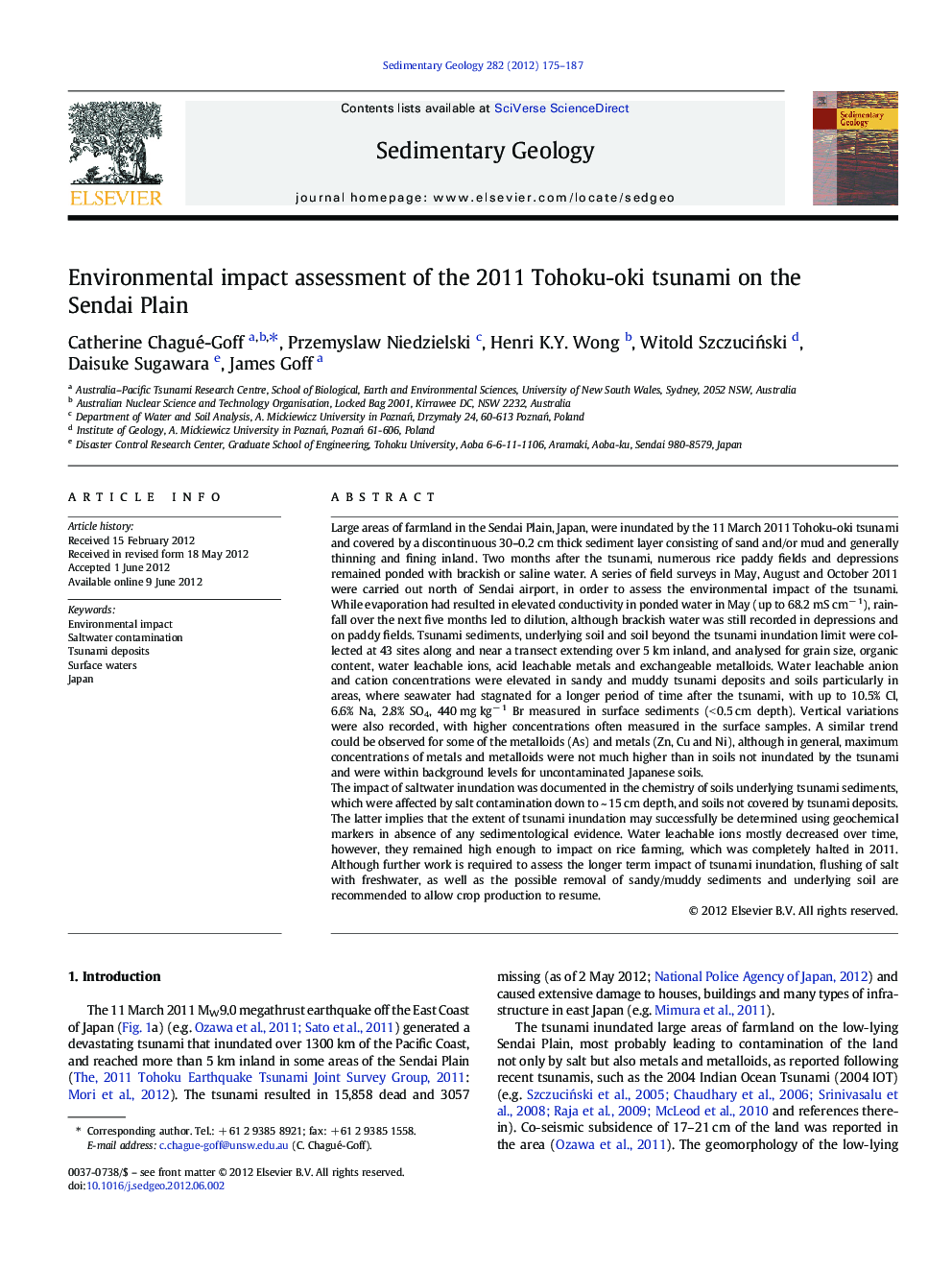| کد مقاله | کد نشریه | سال انتشار | مقاله انگلیسی | نسخه تمام متن |
|---|---|---|---|---|
| 4689626 | 1636079 | 2012 | 13 صفحه PDF | دانلود رایگان |

Large areas of farmland in the Sendai Plain, Japan, were inundated by the 11 March 2011 Tohoku-oki tsunami and covered by a discontinuous 30–0.2 cm thick sediment layer consisting of sand and/or mud and generally thinning and fining inland. Two months after the tsunami, numerous rice paddy fields and depressions remained ponded with brackish or saline water. A series of field surveys in May, August and October 2011 were carried out north of Sendai airport, in order to assess the environmental impact of the tsunami. While evaporation had resulted in elevated conductivity in ponded water in May (up to 68.2 mS cm− 1), rainfall over the next five months led to dilution, although brackish water was still recorded in depressions and on paddy fields. Tsunami sediments, underlying soil and soil beyond the tsunami inundation limit were collected at 43 sites along and near a transect extending over 5 km inland, and analysed for grain size, organic content, water leachable ions, acid leachable metals and exchangeable metalloids. Water leachable anion and cation concentrations were elevated in sandy and muddy tsunami deposits and soils particularly in areas, where seawater had stagnated for a longer period of time after the tsunami, with up to 10.5% Cl, 6.6% Na, 2.8% SO4, 440 mg kg− 1 Br measured in surface sediments (< 0.5 cm depth). Vertical variations were also recorded, with higher concentrations often measured in the surface samples. A similar trend could be observed for some of the metalloids (As) and metals (Zn, Cu and Ni), although in general, maximum concentrations of metals and metalloids were not much higher than in soils not inundated by the tsunami and were within background levels for uncontaminated Japanese soils.The impact of saltwater inundation was documented in the chemistry of soils underlying tsunami sediments, which were affected by salt contamination down to ~ 15 cm depth, and soils not covered by tsunami deposits. The latter implies that the extent of tsunami inundation may successfully be determined using geochemical markers in absence of any sedimentological evidence. Water leachable ions mostly decreased over time, however, they remained high enough to impact on rice farming, which was completely halted in 2011. Although further work is required to assess the longer term impact of tsunami inundation, flushing of salt with freshwater, as well as the possible removal of sandy/muddy sediments and underlying soil are recommended to allow crop production to resume.
► Chemical markers identify tsunami inundation limit beyond sediment deposition.
► Tsunami deposits and underlying soil were contaminated by saltwater.
► Brackish ponded water on land still recorded seven months after tsunami.
► Bioavailable metal/metalloid contents within background levels of Japanese soils.
► Long-term impact of saltwater contamination on rice paddy soils of Sendai Plain.
Journal: Sedimentary Geology - Volume 282, 30 December 2012, Pages 175–187